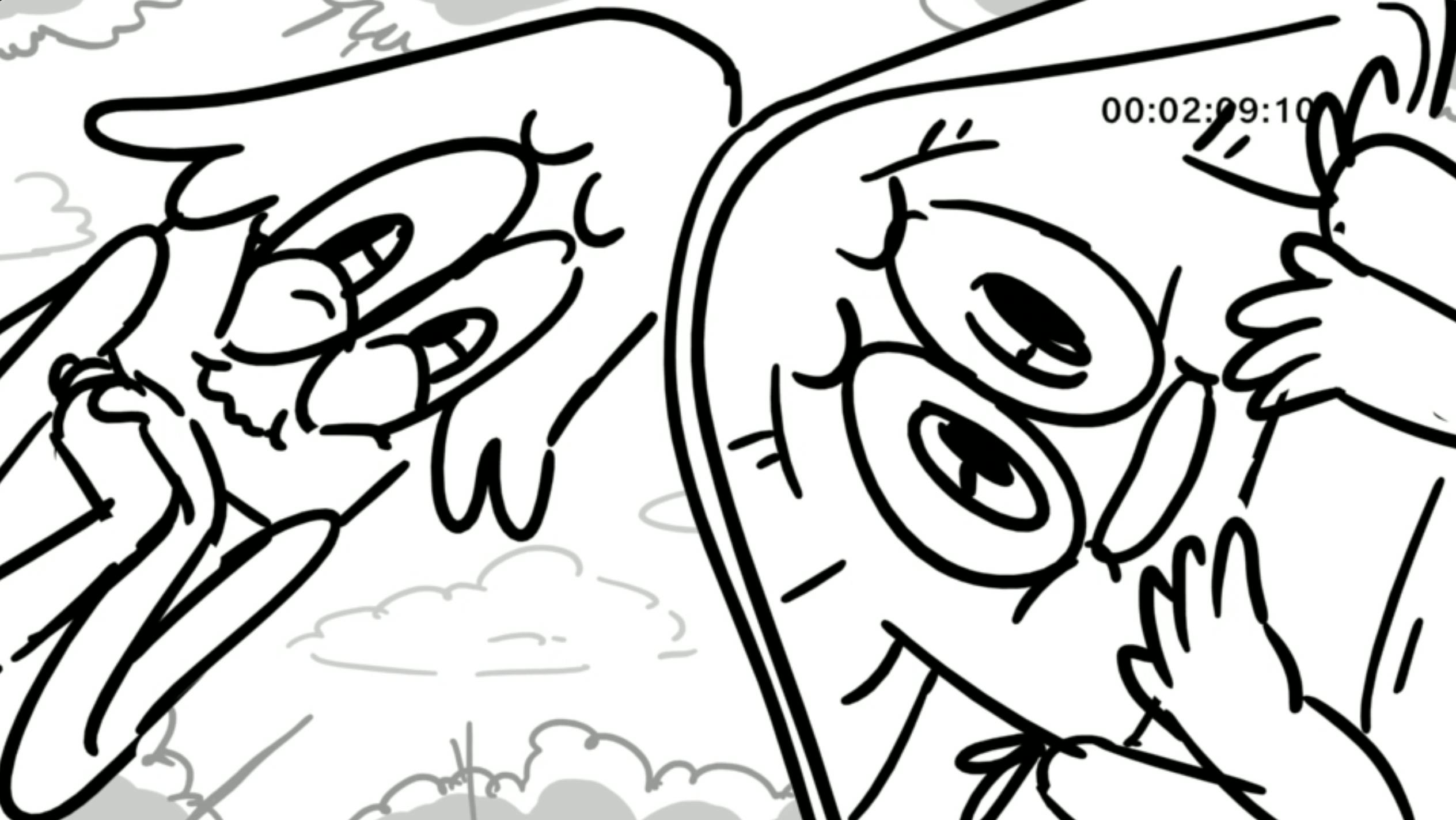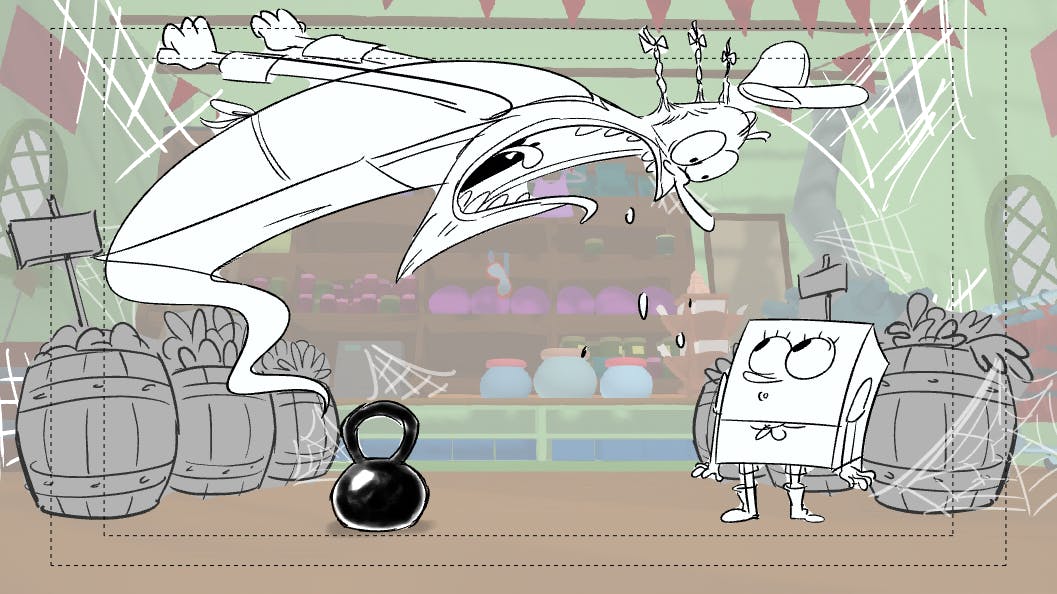Inspiring Storyboarding Examples
Storyboarding is an essential tool for bringing ideas to life in the world of visual storytelling. From Hollywood blockbusters to marketing campaigns, storyboarding is used by professionals across various industries to plan and execute their projects. But what makes a great storyboard? How can we learn from the top industry professionals? And what techniques can we use to create captivating visuals? In this article, we will delve into the world of storyboarding and explore some inspiring storyboarding examples from masterful storytellers.
Storyboarding is the process of visually organizing a story or concept through a series of illustrations. It acts as a blueprint for film, animation, commercials even video games, allowing creators to plan out the sequence of shots and transitions before any real filming or animation takes place. It helps convey the vision and message of the project to the team and stakeholders, ensuring a cohesive and effective end product.
Creative Techniques for Storyboarding
The key to a successful storyboard is effective storytelling. And what better way to learn storytelling than from the masters themselves? One of the most celebrated storyboard artists is Walt Disney. His approach to storyboarding included creating a visual "flow" of the story, leveraging the use of colour and light to evoke emotions and focusing on the smaller details that truly bring a story to life.
Another great example is Pixar Animation Studios. Their storyboarding process involves "pitching" their ideas to the team and using their input to make the story better. This collaborative approach has led to some of the most successful and beloved animated films of all time.
So, what are the key components of good storyboarding examples? First and foremost, it must effectively tell the story and convey the intended message. The visuals should be clear, concise and visually appealing. A good storyboard should also effectively communicate the pacing and flow of the story, making it easier for the team to understand and execute.
Learning from the Masters
Learning from the best is a great way to improve our own skills. In the world of storyboarding, there are plenty of resources available, from workshops and masterclasses to online tutorials and forums. One great resource is the annual Storyboard Summit, where top industry professionals share their knowledge and techniques with aspiring storytellers.
For those looking for a more hands-on approach, there are various mentorship programs available, where individuals can work closely with experienced storyboard artists and receive personalized feedback and guidance.
Techniques for Captivating Visuals
Creating interesting and captivating visuals is crucial in storyboarding. Here are some techniques used by the masters to make their storyboards stand out:
1. Character Expressions: Using a mix of facial expressions and body language can help bring life to characters and convey their emotions more effectively.
2. Perspective and Camera Angles: Experimenting with different perspectives and camera angles can add depth and visual interest to a storyboard.
3. Color and Lighting: The use of color and light can evoke emotions and set the tone of a scene. For example, warm colors can convey a sense of happiness and optimism, while cooler tones can create a more sombre or eerie atmosphere.
4. Varying Shot Sizes: Mixing up the shot sizes (such as close-ups, medium shots and wide shots) can add visual interest and help convey the pacing and mood of a scene.

Artwork by Andrea Cabral
Bringing Ideas to Life
The main purpose of storyboarding is to bring ideas to life and make them more tangible. By creating a visual representation of a story, it becomes easier to understand and communicate complex concepts. It also allows creators to identify any potential issues and make necessary changes before any major production takes place, saving time and resources.
Moreover, storyboards can also be used as a tool for pitching ideas to stakeholders or clients. A well-crafted storyboard can help convey the vision and potential of a project, making it easier to get buy-in and funding.
In conclusion, storytelling is an art form that requires skill, practice, and constant learning. By studying the techniques of the masters and practicing creative storyboarding, we can improve our storytelling abilities and bring our ideas to life in a more effective and visually appealing way. So, whether you're a filmmaker, marketer,or simply a storytelling enthusiast, take inspiration from these inspiring storyboarding examples and keep honing your skills.
Key Components of a Good Storyboard
Storyboarding is an essential part of the creative process, whether for film, animation, marketing videos, or any project that requires visual storytelling. A good storyboard helps organize ideas visually, communicate the flow of a story, and set the stage for execution. Below are the key components that make a storyboard effective, along with tips, examples, and common mistakes to avoid.
Clear and Effective Storytelling
What it is:
Storyboarding is all about telling a story visually. Each frame of the storyboard should serve the overall narrative and convey essential plot points or actions. The sequence should help the audience understand the storyline and character motivations without needing extensive explanations.
Tips:
- Establish the Main Idea Early: Ensure that the central theme or message of your story is evident within the first few frames.
- Use Arcs: Introduce the problem, conflict, or challenge, then show how it escalates and resolves to create an engaging narrative flow.
- Include Transitions: Clearly depict how one scene leads to the next. Use visuals to convey time jumps, location changes, or emotional shifts in the story.
Example:
In a storyboard for a commercial, you might start with a close-up of a frustrated user interacting with a product, followed by frames showing the product solving the problem, ending with the user smiling or feeling satisfied.
Common Mistakes to Avoid:
- Overloading Each Frame: Avoid packing too much information into a single frame, which can confuse the audience.
- Skipping Key Story Elements: Ensure the storyboard includes all major plot points; skipping important beats can make the narrative feel incomplete.
Concise and Clear Visuals
What it is:
Visual clarity is critical in a storyboard. The images don’t need to be complex or overly detailed, but they should be clean, easy to understand, and direct. Each frame should clearly depict the action, characters, or setting relevant to that point in the story.
Tips:
- Use Simple Sketches: Your storyboard doesn't have to be a work of art; stick figures or basic shapes can effectively convey movement and action if done with clarity.
- Focus on Action: Illustrate key movements or gestures that will happen in the final production (e.g., a character opening a door or a camera zooming in).
- Define Settings Clearly: Clearly depict where each scene takes place, so it's easier for the team to understand spatial relationships when creating the final product.
Example:
A storyboard for a short film might show a character walking from left to right across a room in one frame, followed by a wide-angle shot in the next frame to give context to the environment they are moving through.
Common Mistakes to Avoid:
- Overcomplicating the Art: Too much detail can distract from the essential actions or emotions in the scene.
- Vague Actions: Avoid unclear or ambiguous visual representations of actions, as this can lead to confusion during production.

Artwork by Andrea Cabral
Pacing and Flow
What it is:
Good pacing and flow are vital to keeping the audience engaged. The storyboard should show how long certain shots last, when the action speeds up, and when it slows down. This helps the director and team visualize the rhythm and tempo of the final product.
Tips:
- Vary Shot Lengths: Use longer shots for emotional moments and shorter, quicker shots for action sequences to control the pace.
- Maintain Continuity: Ensure that the progression from one frame to the next makes sense in the context of the story and follows logical visual continuity.
- Indicate Movement: Use arrows or annotations to show character movements, camera zooms, or panning, which adds a sense of motion and dynamic flow.
Example:
For a suspenseful scene, you might start with a wide shot of a character approaching a door, followed by several quick close-up shots as the character nervously reaches for the doorknob, conveying tension through pacing.
Common Mistakes to Avoid:
- Inconsistent Transitions: Avoid abrupt or jarring scene changes that disrupt the narrative flow.
- Flat Pacing: Don’t let the pacing become monotonous by keeping every scene the same length—vary shot duration to maintain audience interest.
Character Expressions and Body Language
What it is:
Character emotions are essential to storytelling, and body language and facial expressions should be captured in the storyboard. This helps convey the mood and tone of the scene even before any dialogue is written or recorded.
Tips:
- Exaggerate Expressions: In a storyboard, subtle expressions may not translate well, so exaggerate facial expressions to clearly convey emotions.
- Use Body Language: Show how characters stand, move, or interact with their environment to reflect their emotional state or intentions.
- Show Interaction: Depict how characters interact with each other or with objects to add depth to the scene.
Example:
In a storyboard for a romantic comedy, a character might be shown with wide eyes and a raised eyebrow in one frame to express surprise, and a blushing smile in the next frame to show embarrassment after a romantic encounter.
Common Mistakes to Avoid:
- Lack of Emotion: Flat or neutral expressions can make the scene feel lifeless. Make sure emotions are clearly illustrated.
- Inconsistent Depictions: Ensure that expressions and body language remain consistent with the scene’s mood and flow from one frame to the next.
Perspective and Camera Angles
What it is:
Varying perspectives and camera angles make the storyboard more dynamic and can dramatically enhance how a scene is perceived. By indicating the camera’s position in relation to the characters and objects, you help set the tone and focus for each shot.
Tips:
- Use a Mix of Angles: Combine wide shots, close-ups, bird’s eye views, and low angles to add variety to your scenes.
- Highlight Important Details: Use close-up shots to emphasize key moments or important details, like a character’s reaction or a specific object.
- Create Depth: Show the relationship between foreground and background elements by using perspective effectively.
Example:
In a storyboard for an action scene, you could show a wide shot of the protagonist running toward the camera, followed by an over-the-shoulder shot of them looking at an obstacle in their path.
Common Mistakes to Avoid:
- Static Angles: Avoid using the same angle for every frame, which can make the storyboard feel flat and uninteresting.
- Misleading Perspectives: Ensure that the camera angles you indicate make sense in terms of storytelling and visual continuity.
Use of Color, Lighting, and Mood
What it is:
While not every storyboard needs to be in full color, adding color or shading can help convey the mood or lighting of a scene. Color choices and lighting direction can guide the emotional tone, highlight key elements, and enhance the story's atmosphere.
Tips:
- Use Color Sparingly: In most storyboards, use minimal color to highlight important elements (e.g., red for danger, blue for calm scenes).
- Show Lighting: Indicate where light sources are, especially in dramatic scenes that require mood lighting.
- Convey Atmosphere: Use shading or color to show day vs. night, indoors vs. outdoors, or different weather conditions to set the scene.
Example:
In a storyboard for a horror film, dark shadows and dim lighting can be used to evoke a sense of fear, while bright, warm lighting in another scene might represent safety or happiness.
Common Mistakes to Avoid:
- Overusing Color: Too much color can clutter the storyboard and distract from the key elements.
- Ignoring Lighting: Failing to depict lighting changes can result in missed opportunities to enhance mood and drama.
Conclusion
A good storyboard is the blueprint for your final project, whether it's a video, commercial, or animation. By focusing on clear storytelling, concise visuals, well-paced flow, expressive characters, dynamic camera angles, and effective use of color and lighting, you can ensure that your storyboard effectively communicates your vision. Avoiding common mistakes like cluttered visuals, flat pacing, or static angles will keep your storyboard engaging and purposeful.

